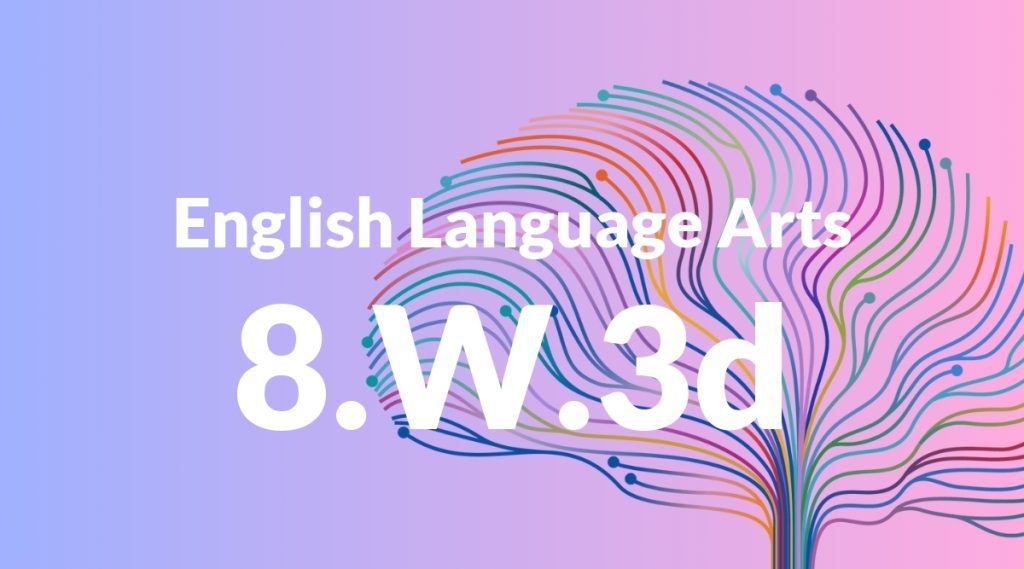Standard: 8.W.3d – Use precise words and phrases, relevant descriptive details, and sensory language to capture the action and convey experiences and events.
Grade level: Grade 8
Subject: English Language Arts
Domain: Writing
Teacher Overview
This standard emphasizes the importance of using precise language and sensory details to create vivid and engaging narratives. Mastering this skill is crucial for students as it enhances their ability to communicate experiences and events effectively, making their writing more compelling and relatable. Students should be familiar with basic narrative structures and simple descriptive language. They should also be able to organize events coherently and have a foundational understanding of how to use adjectives and adverbs.
Students will progress to more advanced narrative techniques, including the use of symbolism, thematic development, and complex character development, further enhancing their writing skills.
Common Misconception 1
A common misconception is that more adjectives make writing better. This is incorrect because overloading sentences with adjectives can make writing cluttered and less impactful.
Intervention 1
An effective intervention is to provide students with examples of both cluttered and concise descriptive writing, and guide them in identifying the more effective approach. Practice exercises that focus on selecting the most precise words can also help.
Common Misconception 2
Another misconception is that sensory details are limited to visual descriptions. This is incorrect because engaging all five senses can create a more vivid and immersive narrative.
Intervention 2
Encourage students to practice writing exercises that focus on describing scenes using all five senses. Use prompts that specifically ask for sensory details related to sound, smell, taste, and touch, in addition to sight.
Prerequisite Knowledge
Students should have a basic understanding of narrative writing, including the structure of a story, the use of simple descriptive words, and the ability to sequence events logically.
Subsequent Knowledge
After mastering this standard, students will develop the ability to write more sophisticated and engaging narratives, utilize advanced literary devices, and enhance their overall writing style to better convey complex experiences and emotions.
Instructional Activities
- Write a short story using a prompt that requires sensory details.
- Create a descriptive paragraph about a memorable experience using all five senses.
- Peer review sessions focused on identifying and improving descriptive language.
- Writing exercises that replace vague words with precise and impactful ones.
- Group activities where students describe a scene from different sensory perspectives.




